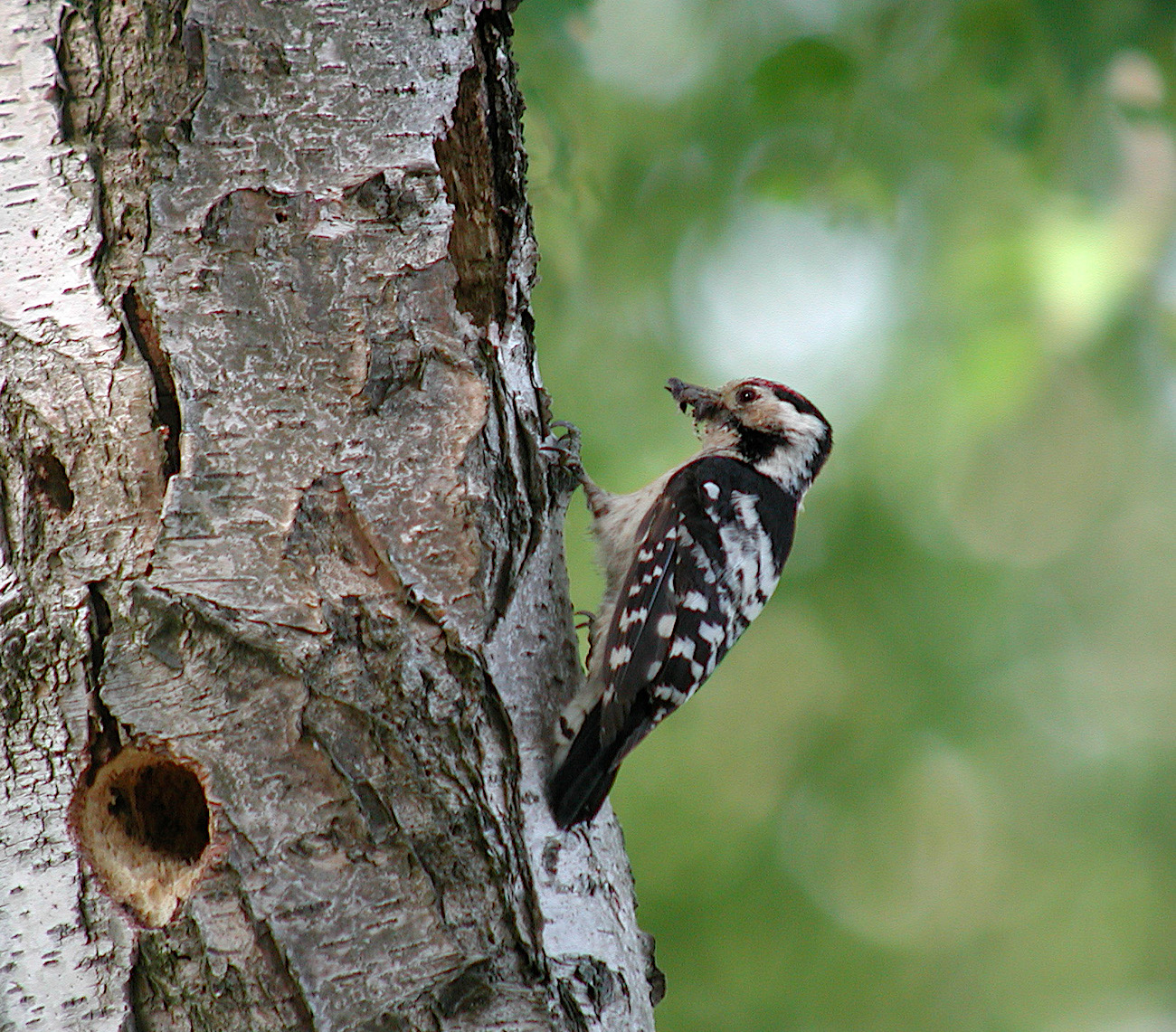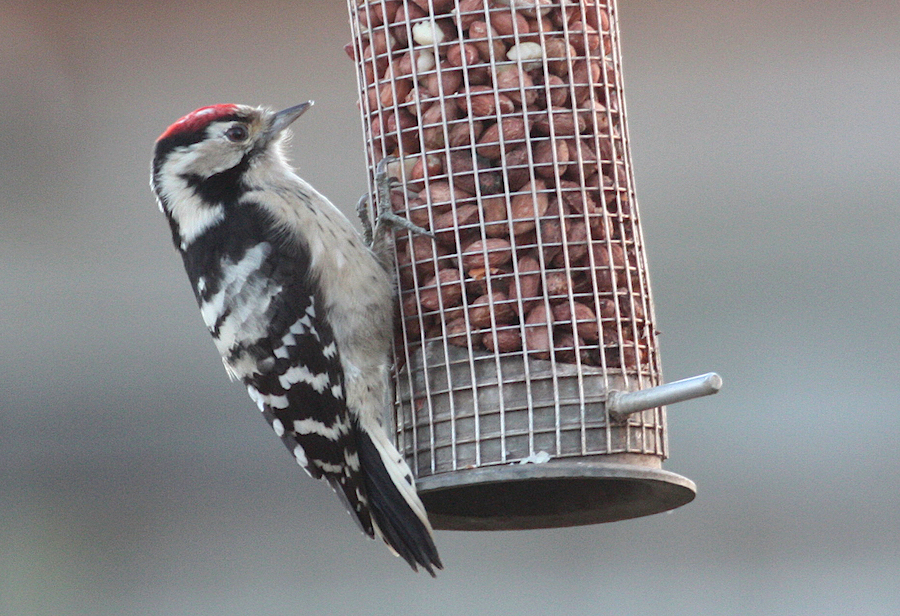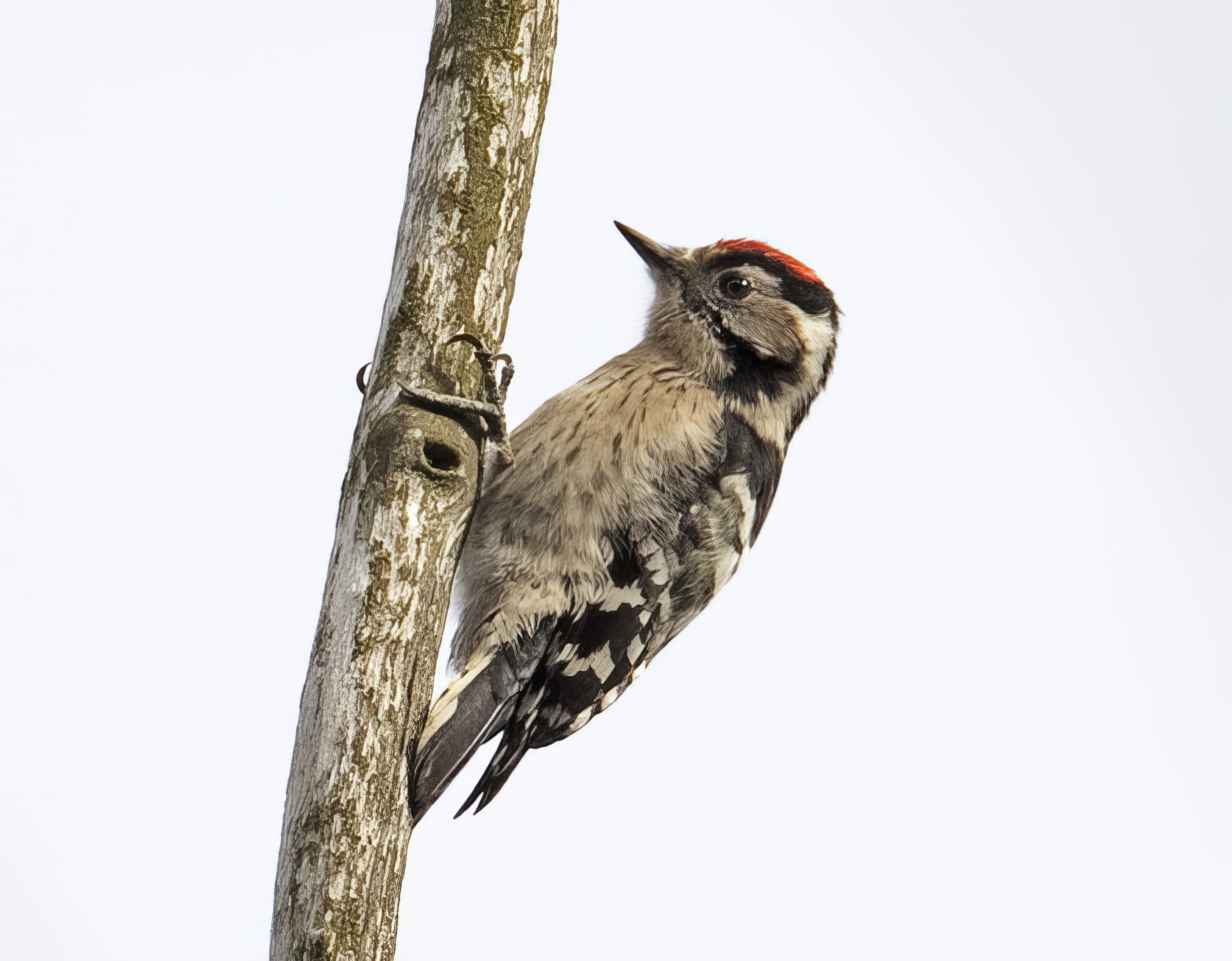Lesser Spotted Woodpecker Dendrocopos minor
Very scare and declining resident.
Lesser Spotted Woodpeckers: left, Sweeting Thorns, May 26th, 2004 (G.P. Catley); centre, in a Fleet (Holbeach) garden January 9th, 2011 (C. Neve);
right, February 16th, 2012, N. Lincs (G.P.Catley)
Now one of our rarest breeding birds, possibly extinct, the species doesn't even register for BBS on the UK scale. The catastrophic decline in the population led to it being considered by RBBP from 2010. RBBP records show an average of 4 pairs per year bred in Lincs during the period 2013-2017. It wasn't always like this. Smith and Cornwallis (1955) described the species as 'rather scarce but well distributed in wooded country' while Lorand and Atkin (1989) noted that while under-recorded it was still found in wooded areas in the north-west, south-west and central parts of the county. The Atlas estimated the population at 60-80 pairs in the late 1980s and considered it had increased through the 1990s by some 25%, suggesting a population around 1997 of 75 to 100 pairs. They also continued to breed in small, isolated pockets in the fens, with breeding known to have occurred in the Kirton-Frampton area 1982-1987; for instance, a pair were observed feeding at least two newly fledged juveniles in Hall Weir, Kirton, June 13th, 1982, one of which was later trapped and ringed.
By 2010 only 15 possible pairs were reported and in 2018 that had fallen to 3. What went wrong between 1997 and 2010 is unknown. Theories include competition and predation from Great Spotted Woodpecker, Dendrocopos major and starvation of young through declining food quality. Sims (LBR 2015) reported detailed observations of a breeding pair in Lincoln across 2 years in 2015 and 2016. It is thought the sex ratio of the species is currently skewed with more males than females. This may lead females to abandon their first brood to their mate to raise the chicks so she can raise a second brood with a different unpaired male. This is what happened to the Lincoln pair in 2016. The female disappeared in late April and the male continued to incubate the eggs, feed the young after hatching, and eventually three young fledged. It will be a great shame to lose this species from Lincolnshire without fully understanding the causes of such a catastrophic decline.
There are two coastal records both from Gibraltar Point - one trapped there August 10th 1988 and another in early October, possibly a different bird.
Submitting records - update
Given the rarity, or extinction, of this species in the county, discussion with the records committee and other birders around the county, Lesser Spotted Woodpecker records need to be documented and submitted from and including those in 2022 onwards, please! The National decline suggests there is no hope of a resurgence in the species’ fortunes. Accordingly, the records committee (LBRC) request that observers submit full descriptions together with photographs and (if possible) sound recordings of calling and/or drumming birds (other species can mimic them or sound like them, including Nuthatch and Starling).
(Account as per new Birds of Lincolnshire (2021), included October 2022; updated 2023)



